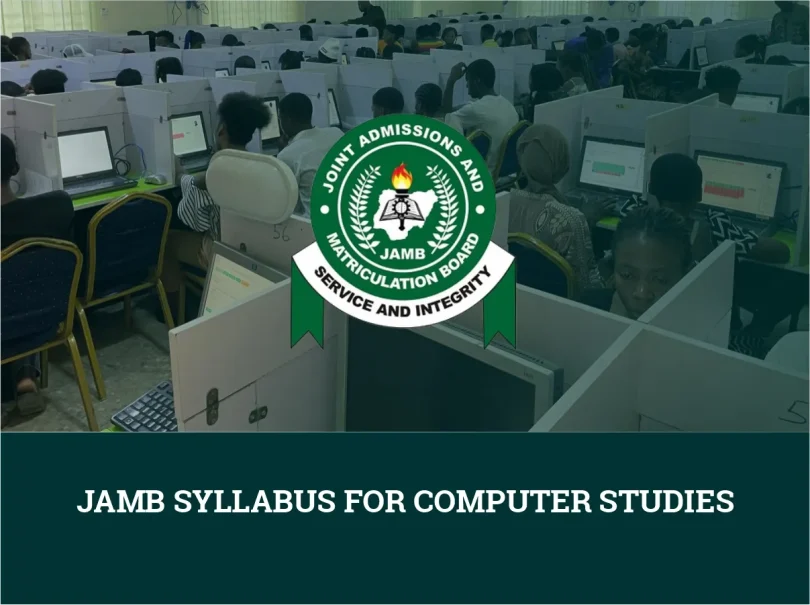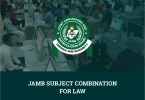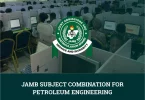Students preparing for the JAMB Computer Science examination, need to understand the official syllabus is their first and most important step. The syllabus serves as their guidebook, helping them stay focused on the most relevant topics, avoid distractions, and build a solid foundation in computer science.
The JAMB syllabus for Computer Studies is designed by JAMB to ensure that all candidates taking the JAMB exams are assessed fairly on key concepts and skills that are important for both the exam and real-world applications of computing.
By following this JAMB syllabus for computer science, as we will show you in this article, you will be better prepared and able to manage your study time more effectively to excel in the JAMB exam. Ensure you read the information provided in this article carefully.
Importance of the Syllabus
The JAMB Computer Studies syllabus is important because it helps to prevent many candidates from wasting valuable time studying what won’t appear in the exam. It shows students exactly what to study, what concepts to master, and how deeply to understand each area.
Ensure you follow the information provided in this article to be equipped with a broad understanding of computer science principles.
General Objectives of the Syllabus
The Computer Science syllabus aims to test candidates’ knowledge of how computers evolved, understanding of computer systems and their components.
Students will learn how to solve problems and think logically using computers. They need to know the difference between system and application software, understand how computer parts like input, output, storage, and processing work, and be able to use the internet and digital tools. It is also important to know the right way to use technology and the job options available in the computer field.
JAMB Syllabus for Computer Studies 2025
Section A: Evolution of Computing
History of Computing: This section focuses on the development of computing devices from ancient tools to modern machines. Candidates will explore:
- Early computing devices such as the Abacus, Slide Rule, Napier’s Bones, and Pascal’s Calculator
- Key inventions like the Analytical Engine by Charles Babbage, the Jacquard Loom, and Hollerith’s Census Machine
- Major developments in the 20th century include ENIAC, EDVAC, UNIVAC I, and the rise of personal computers.
Classification of Computers: Candidates are to identify how computers have advanced over time, their features (speed, components, storage), and distinguish between different systems like desktops, tablets, servers, wearables, and more. Computers can be grouped by:
- Generation (from first to fifth)
- Size (micro, mini, mainframe, and supercomputers)
- Purpose (general-purpose vs. special-purpose)
- Type (digital, analog, hybrid)
Section B: Fundamentals of Computing
Introduction to Computer Systems
Understand the two main parts of a computer:
- Hardware: It is the physical parts you can see and touch
- Software: This is the programs that run on the hardware
Candidates will learn a ain a clear understanding of how a computer operates, the role of each component, and how hardware and software work together.:
- Characteristics of computers – speed, accuracy, reliability, and storage
- Key hardware parts like input devices (keyboard, mouse), output devices (monitor, printer), and the CPU (with its ALU, CU, and Registers)
- Memory types: RAM (Random Access Memory) and ROM (Read-Only Memory)
- Differences between primary and secondary storage
Conclusion
The JAMB syllabus for Computer Science will serve as a guide for candidates preparing for the exams. After studying the syllabus, candidates should be able to understand how computers work and why they are powerful tools, can handle tasks quickly, accurately, and store lots of information. You will be able to name and explain the purpose of input devices (like keyboards), output devices (like printers), and storage devices (like flash drives).
You will also learn the difference between RAM, which temporarily holds data while the computer is working, and ROM, which holds permanent instructions and lots more. By following it carefully, you will cover all the important areas needed to succeed in the exam and build knowledge that will serve you in university and beyond. We hope you found this article helpful. Keep visiting this page for more updates!







Leave a Comment